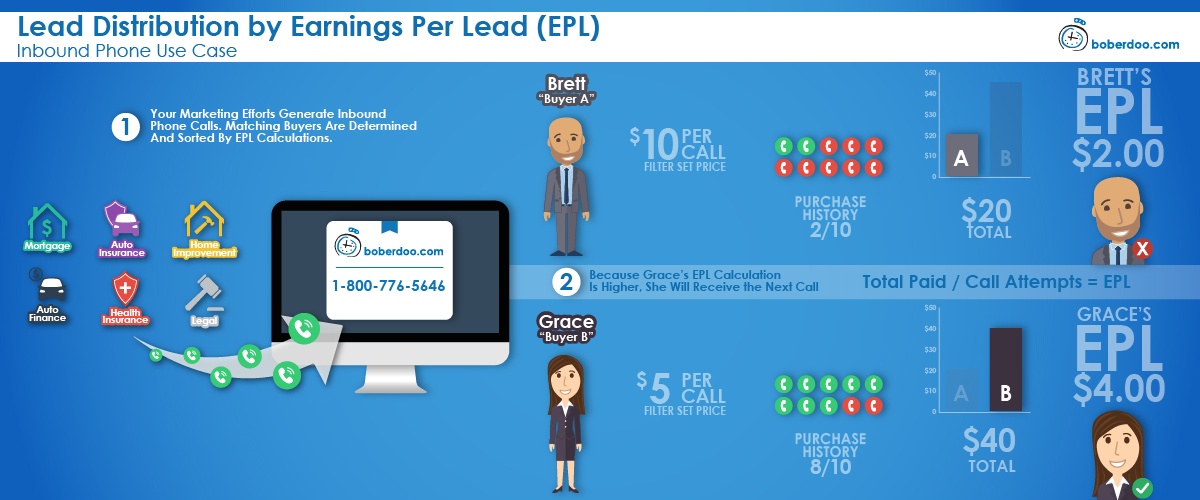Lead Distribution by Earnings Per Lead (EPL)
Distributing your leads based on earnings per lead allows you to route your leads by best price based on a calculation of the actual earnings you’ve received from each individual buyer rather than the static price that each individual buyer is willing to pay. This is most common when routing phone calls in which a buyer can accept a lead at a static price, but then reject that lead and end up paying $0.
Because of this, a more accurate prediction of the best price for each individual call or lead is the average earnings per lead (EPL) that you receive from each buyer rather than the static list price that each buyer is willing to pay. This also helps the lead by matching him/her with a lead buyer that is most likely to take their call as opposed to the buyer that is willing to pay the most.
Lead Distribution by Earnings Per Lead (EPL) – How It Works
Inbound Phone Use Case
Successfully selling a phone call has three important requirements:
- The caller must remain on the line.
- The buyer must pick up the phone.
- The call must last a minimum duration to be considered a success (can be set to 0 seconds).
If any of these 3 steps are not completed, the call cannot be marked as sold. While you can’t predict a caller’s likelihood to hang up the phone, you can factor in the frequency at which a matched call buyer successfully completes and purchases a call. By failing to pick up the phone (which causes the caller to wait on hold until another buyer can be attempted) or failing to keep the caller on the line for the minimum duration (which ends the call without giving you the option to re-route the call or charge the buyer), your buyer is hurting your ability to profit on the call you generated.
Because of this, it is important to look at not only the price your buyers are willing to pay for each call, but the frequency at which they cause a call to fail. To do this, an average Earnings Per Lead (EPL) is recorded for each of your buyer’s filter sets. This constantly-updating EPL variable is then used to sort and prioritize buyers for each call.
Inbound Phone Example
For example, let’s say buyer A agrees to pay $10 per call, but has only completed and successfully purchased 2 of the last 10 calls attempted to him ($20 paid / 10 calls attempted). Because he has paid a total of $20 for the 10 calls attempted to him, his EPL is $2.00
Let’s also say that buyer B pays $5 per call and has completed and successfully purchased 8 of the last 10 calls attempted to her ($40 paid / 10 calls attempted). Because she has paid a total of $40 for the 10 calls attempted to her, her EPL is $4.00

In this scenario, since you are routing calls based on EPL rather than by best filter set price, you will attempt buyer B first, even though buyer A is willing to pay twice as much for that call.
With the boberdoo lead distribution system, you have several lead distribution logic options. These options are available to every client and can even be customized to meet your specific needs. Visit our lead distribution logic page for more information on each of these options.
If you’d like to discuss the best lead distribution options for your business, please give us a call at 800-776-5646 or fill out the form below.

